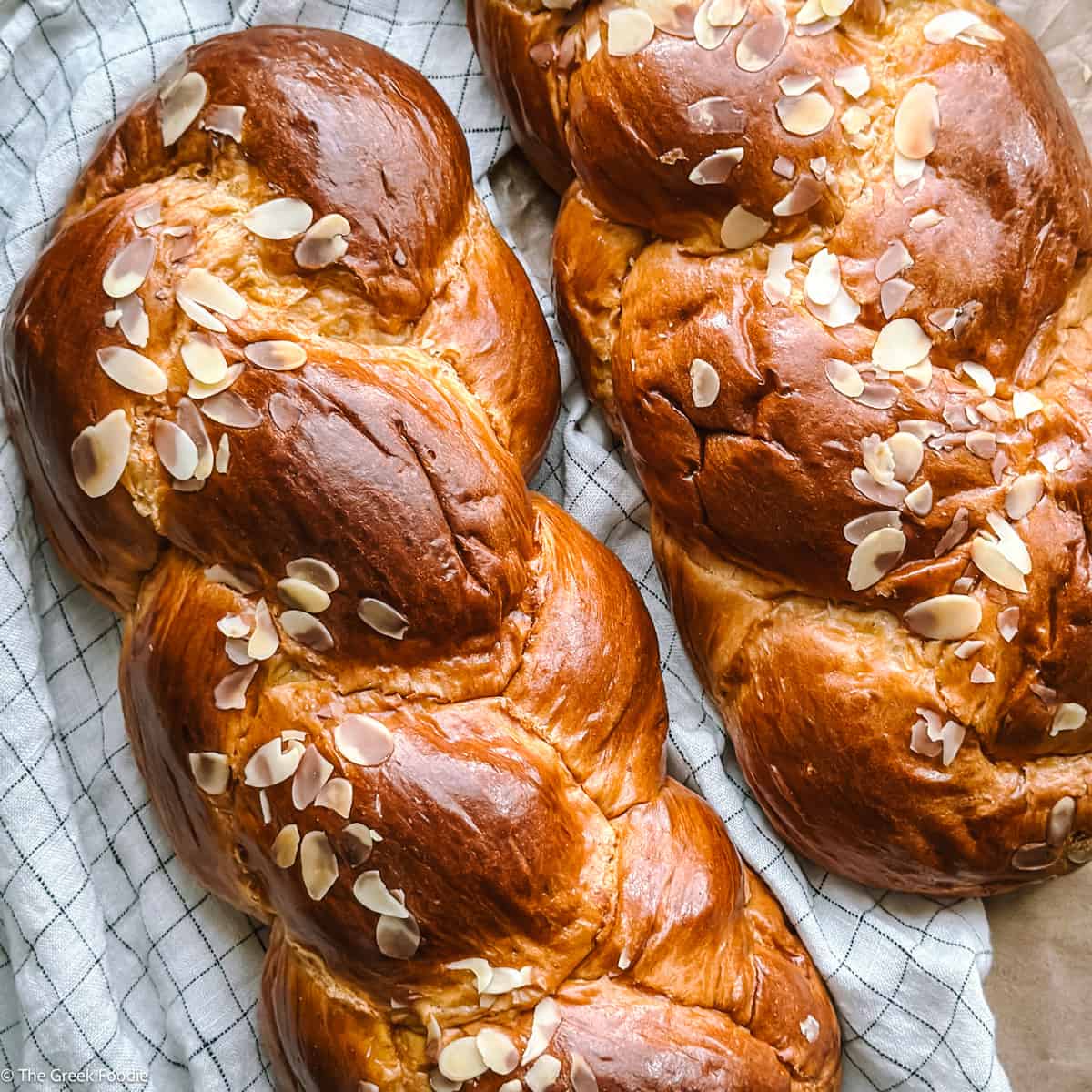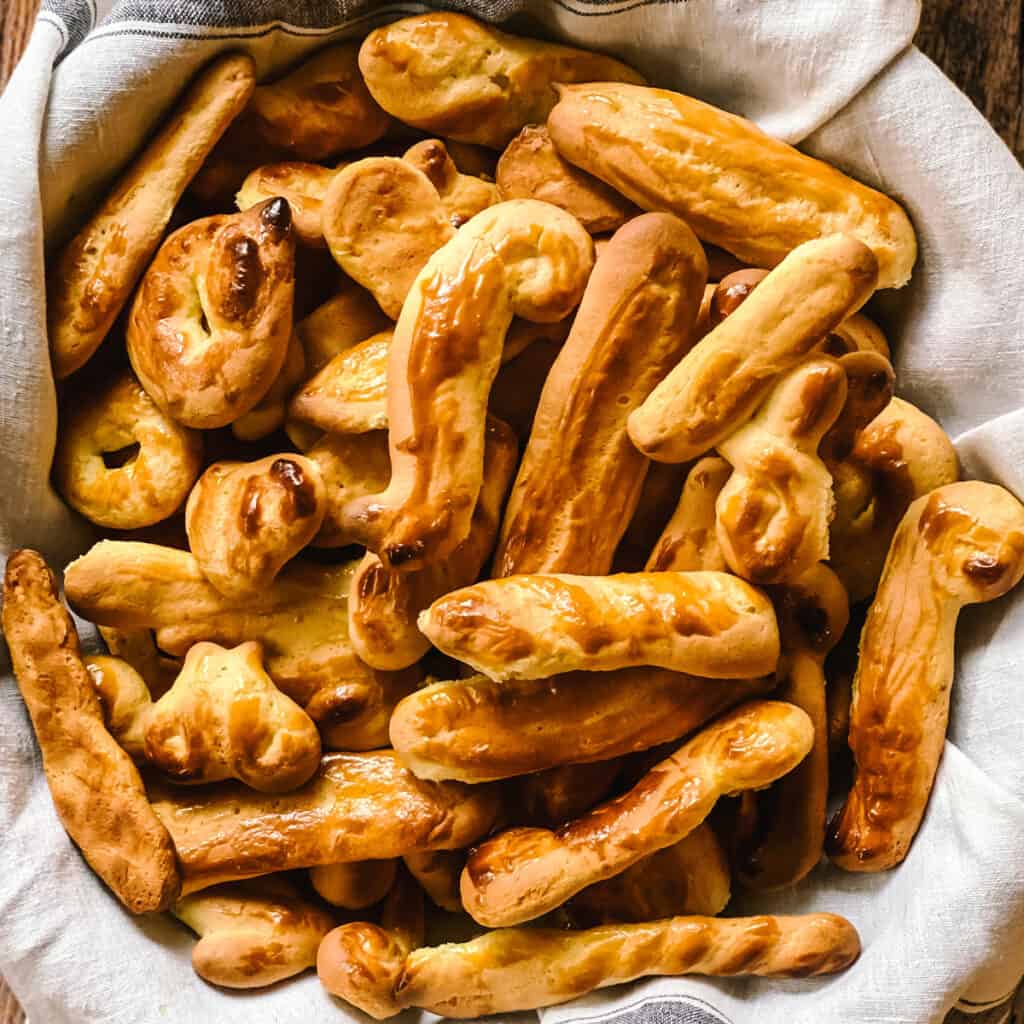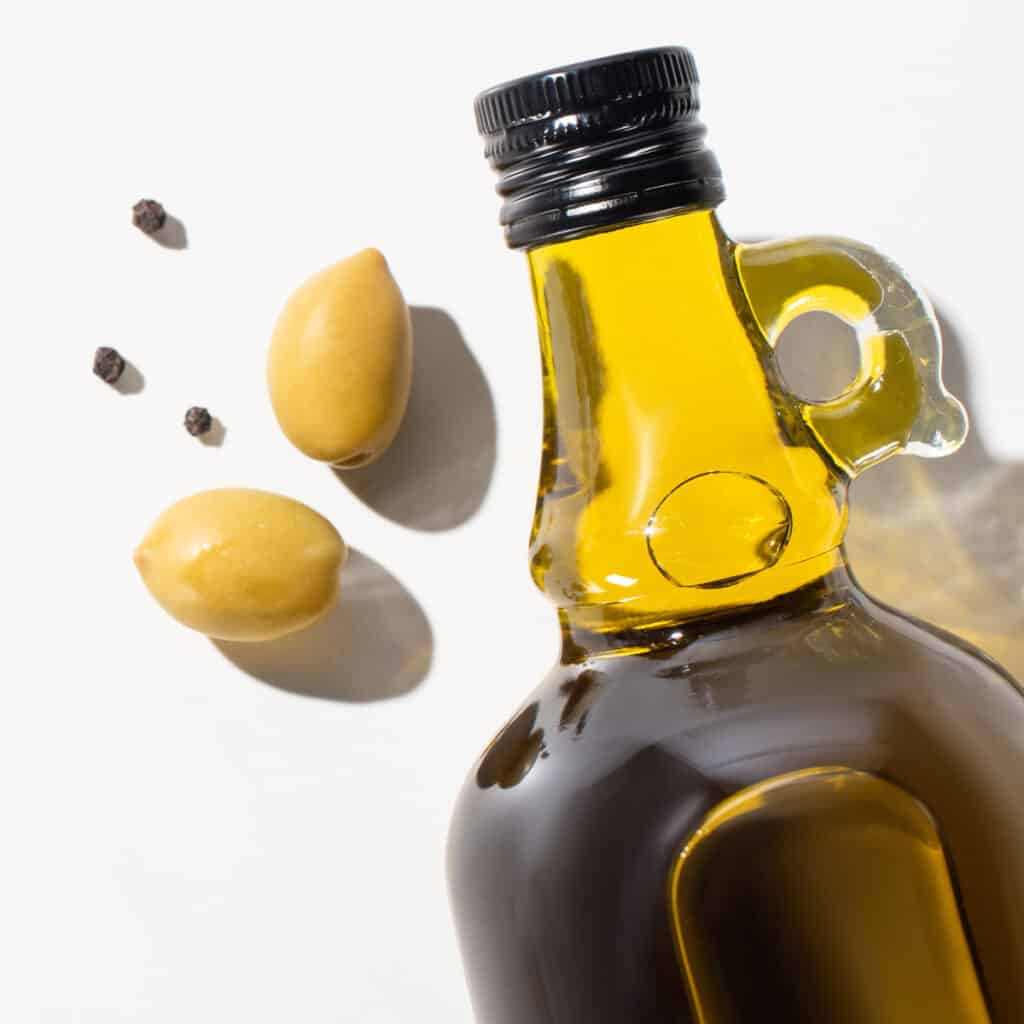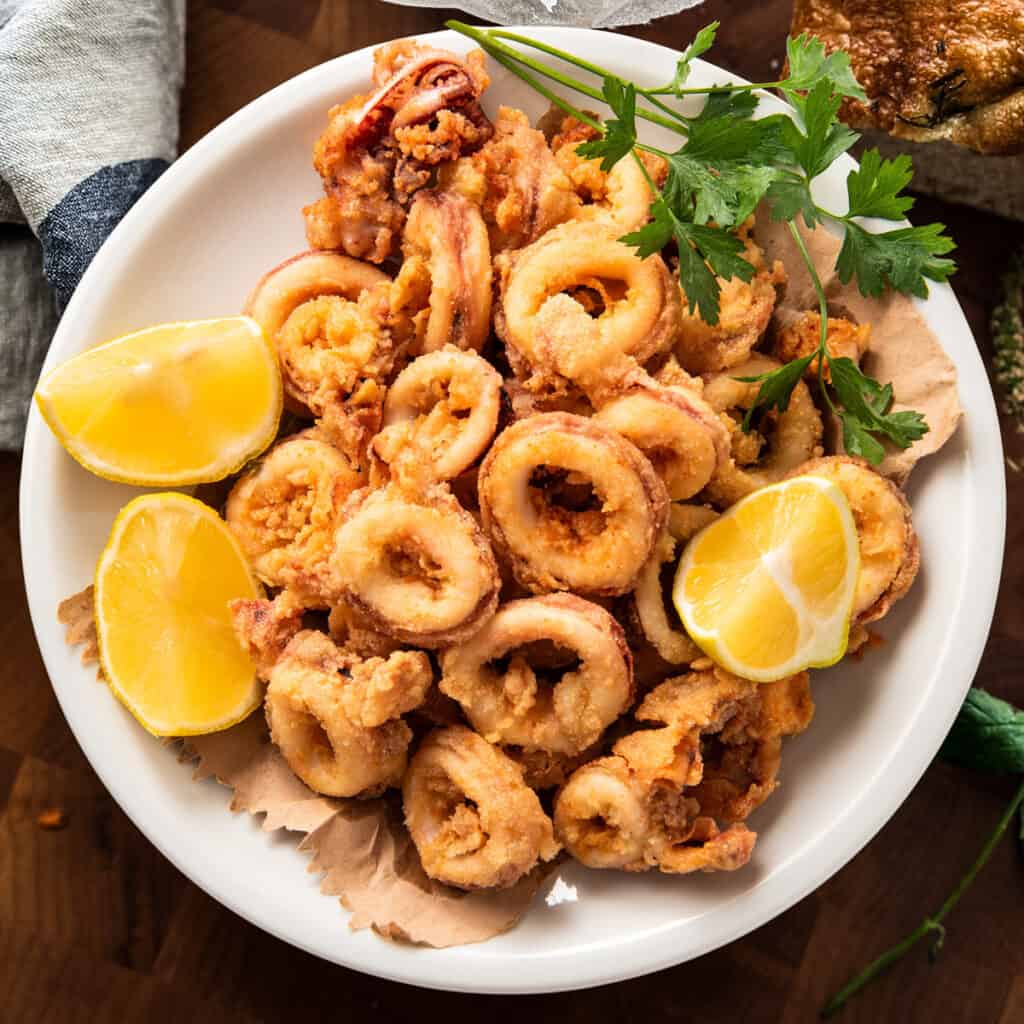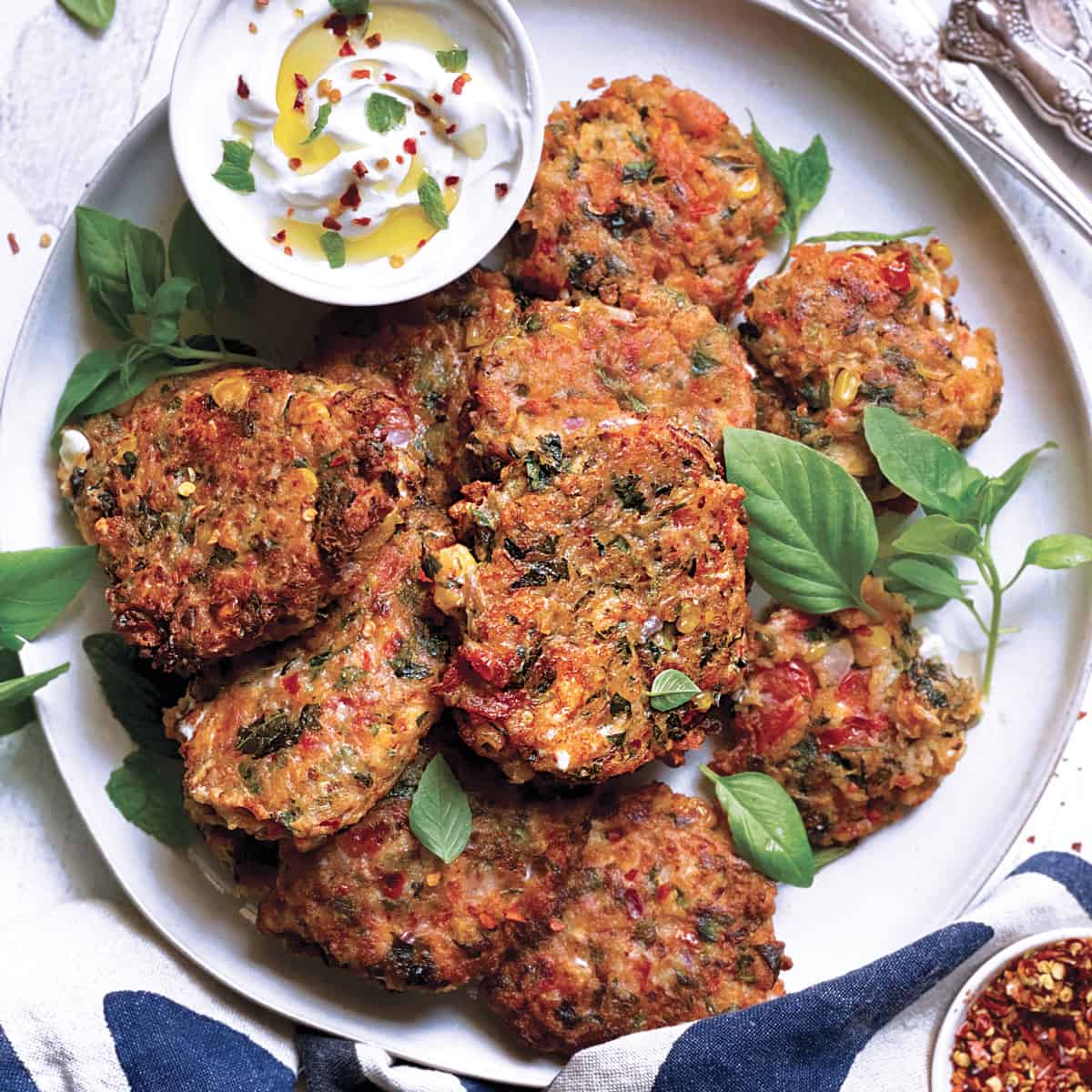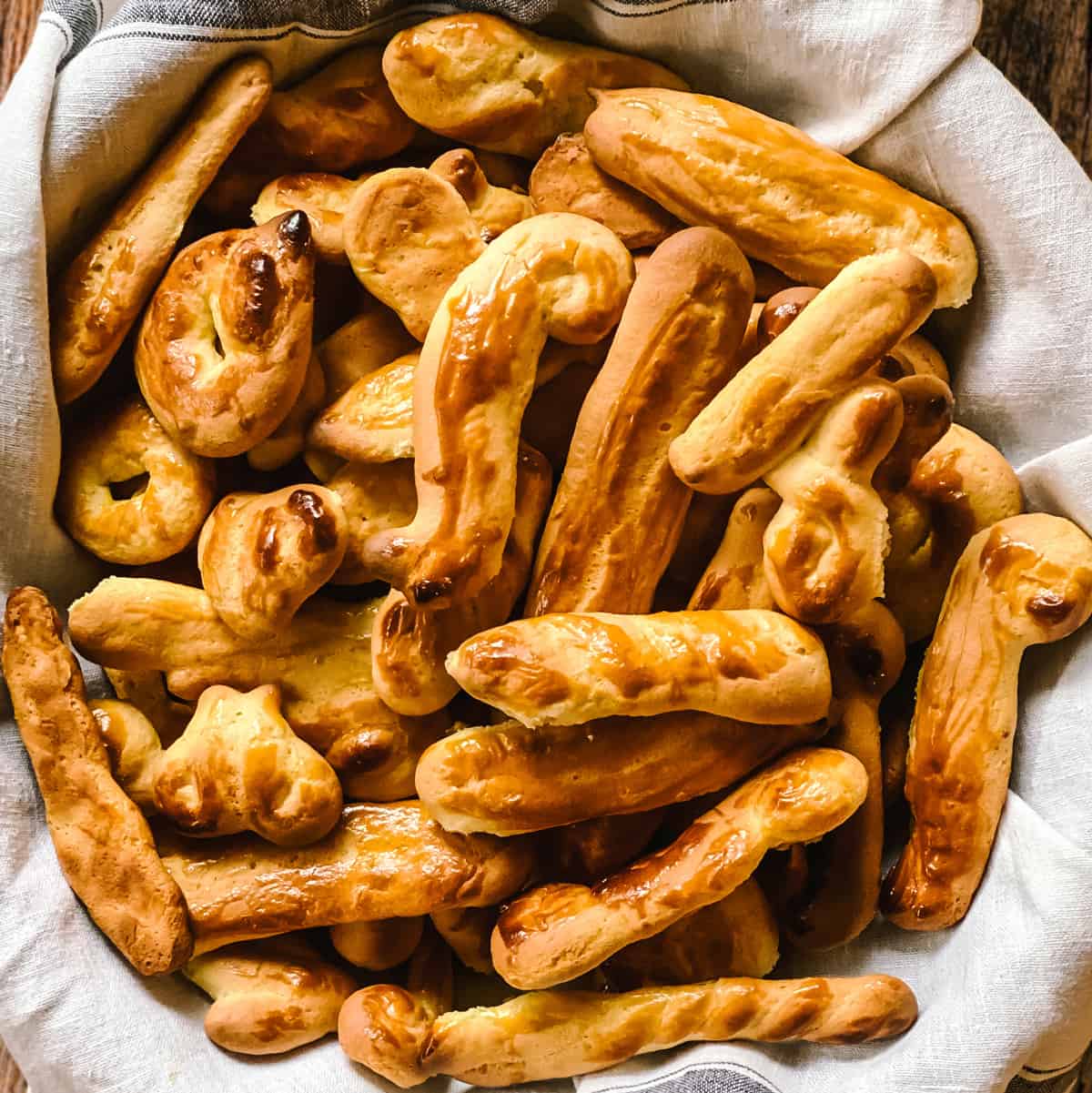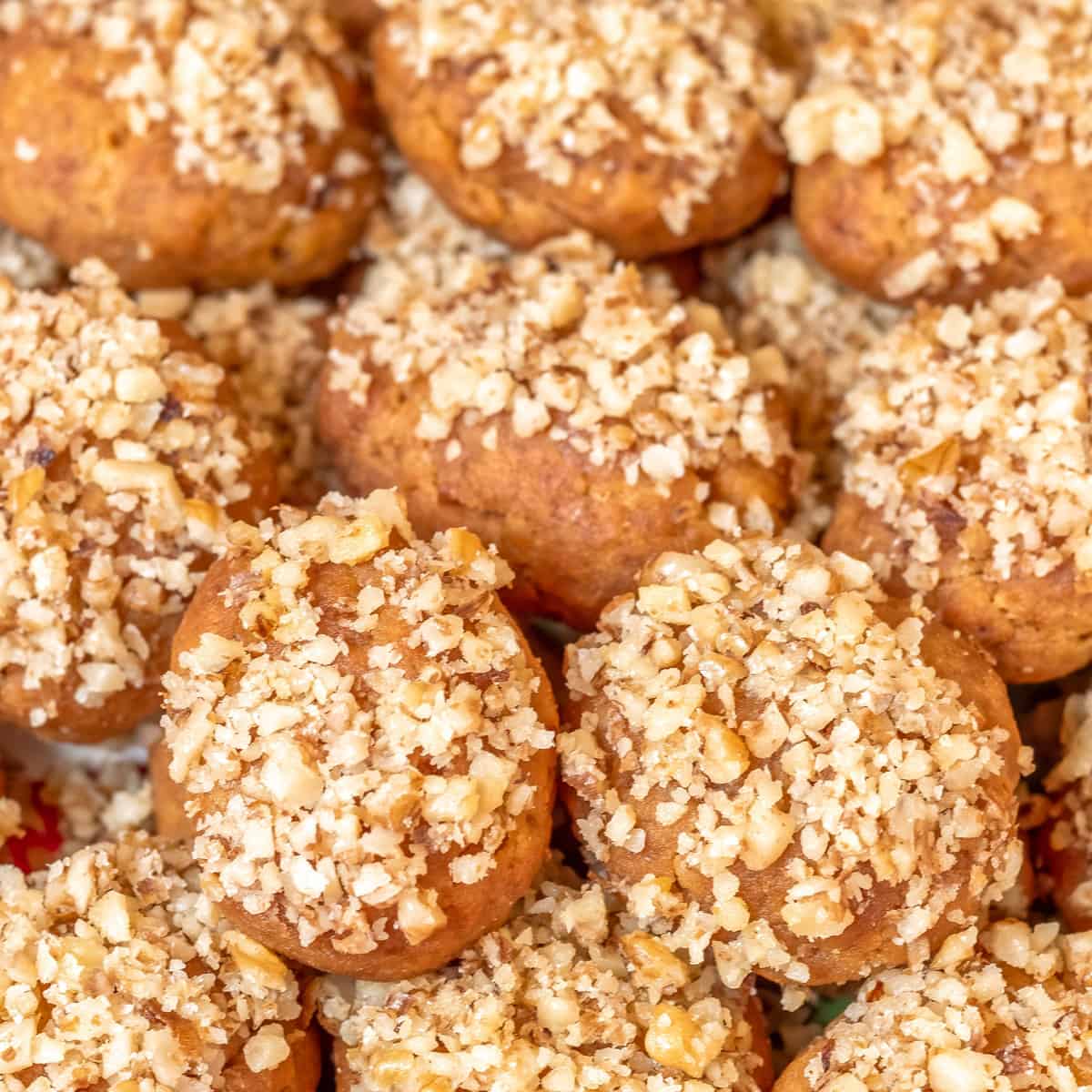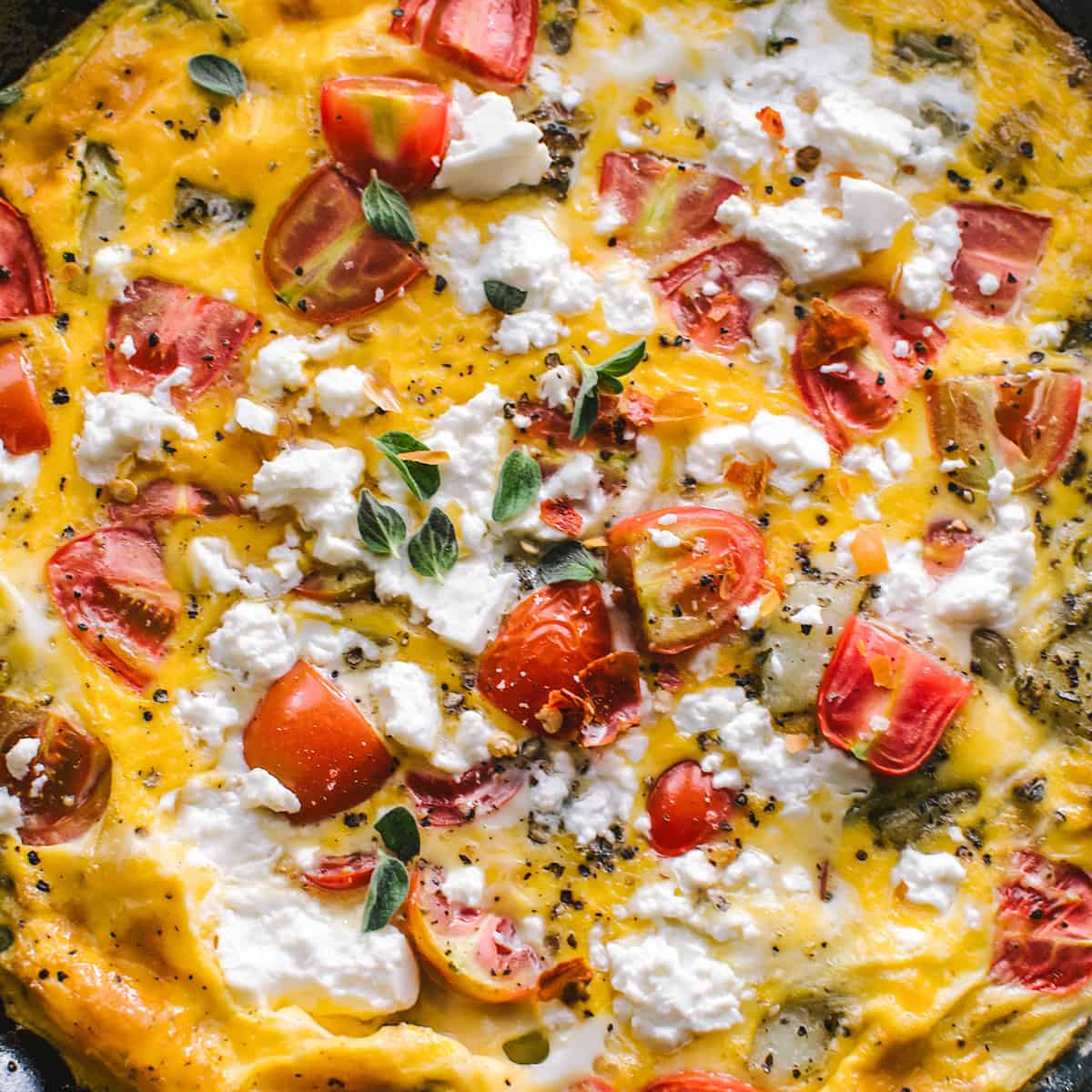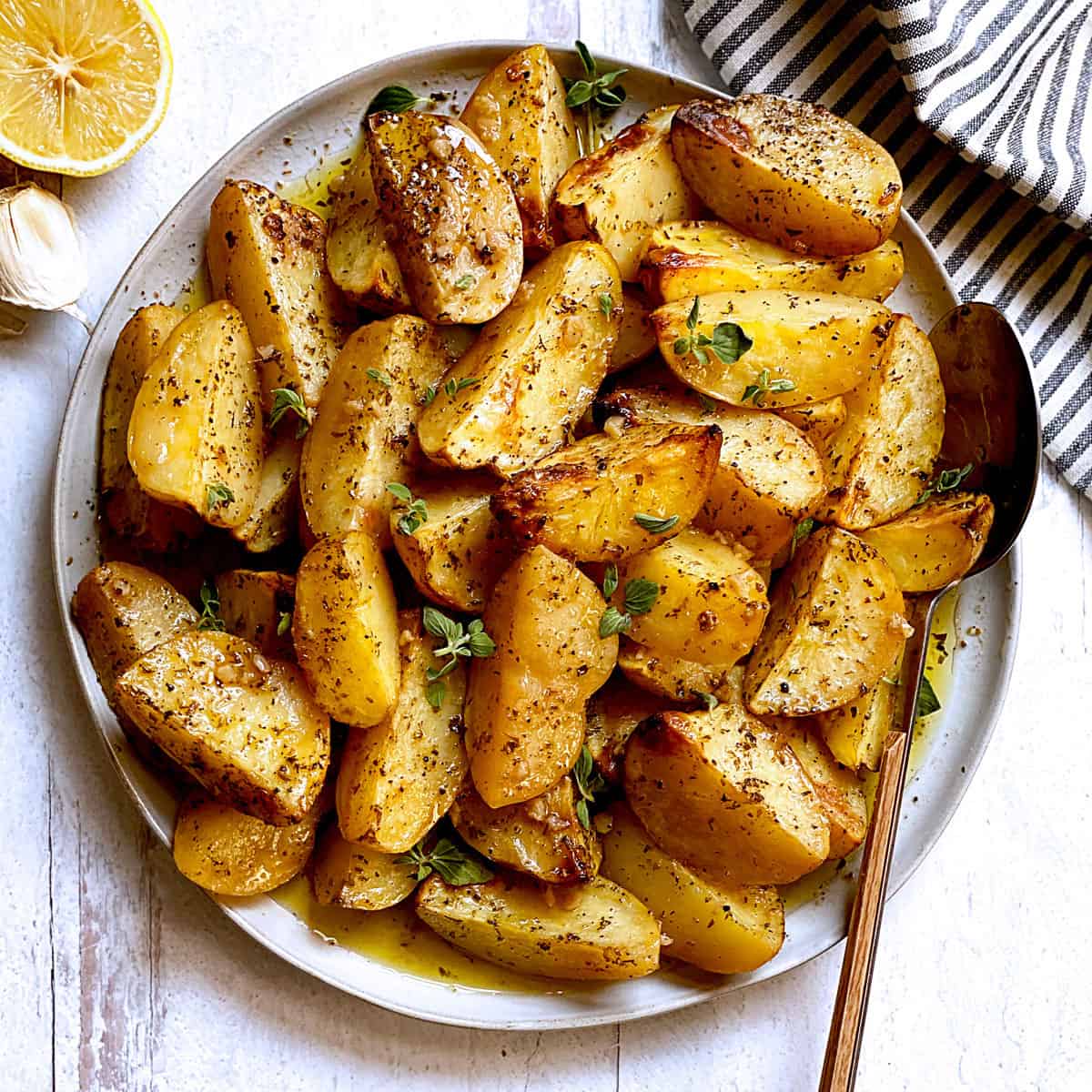Tsoureki bread is a delicious soft semi-sweet bread similar to brioche and challah. The Greek holiday bread usually made for Easter and Christmas is a delicacy enjoyed year-round.
If you love this Tsoureki Bread-The Greek Brioche, you will also love this Tsoureki French Toast, Rustic Bread with Olive Oil or Greek Pita Bread!

Why this recipe sings
This recipe is my grandmother’s Evgenia. My aunt and godmother Kaitie and grandma Evgenia would wake up at the crack of dawn to prepare tsoureki bread. They would tirelessly knead by hand the dough, prove, braid, prove again and produce 5-6 amazing tsoureki loaves. It was an event that all the grandchildren looked forward to.
Tsoureki gets its unique flavor from mastic and mahlepi.


What is mastic?
Mastiha (as we call it in Greece), or mastic, is a resin derived from the Pistacia lentiscus, the mastiha tree. It is a predecessor of modern-day chewing gum. It has a sweet, herbal, satisfying flavor slightly similar to rosewater. Mastiha comes from the island of Chios, the mastiha tree was discovered there in 1822. It is harvested from July to October in a procedure that takes the sap out of the tree.
Mastiha is used in various ways, from bread to dessert to liqueurs.
It reminds everyone of their childhood. A very popular sweet treat is a ypovrichio (Greek for submarine). Matsiha mixed with glucose and sugar forms a sticky thick cream (sort of like a marshmallow texture). A spoonful of this white cream dipped in a cold glass of water makes a super sweet treat licked for hours by children like a lollipop.
You can find whole or ground Mastiha tears in Greek food shops and online at Amazon and www.titanfoods.com.
What is mahlepi
Mahlepi (Mahleb) is a spice made from the black cherry stone(Prunus mahaleb). It is used ground in small quantities to sharpen sweet foods and cakes. The flavor is similar to bitter almonds, cherry, and marzipan.
You can find whole or ground Mahlepi in Greek and Middle Eastern food shops and online at Amazon and www.titanfoods.com.
Here is what you need

- Strong bread flour. The ideal flour is the one with high protein content, close to 13%, with lots of gluten.
- Medium-sized eggs.
- Yeast. You can use fresh yeast or active dry yeast.
- Butter. Traditionally the recipe has equal parts of cow’s milk butter and goat butter. Any good quality non-salted butter will do well.
- Whole milk, sugar and a little salt(not shown).
- Mastiha and mahlepi. You can get the tears and whole kernels and ground them using a pestle and mortar or opt for the ground versions available in shops. Shopping info is included in the post and also in the recipe notes.
One more ingredient that makes this recipe unique is anise seeds.
- Grandma liked to steep anise seeds in hot water for 15 minutes, remove the seeds and wet her hands in the cooled-down anise tea while kneading the tsoureki. That is a tradition that I am honoring in this recipe. The anise tea gives a lovely faint aroma to this bread. You can find anise seeds at your local supermarket or online.
How to make tsoureki bread
Boil two cups of water. Add the anise seeds and let them steep for 10-15 minutes. Remove the seeds and let anise tea cool down.
Warm up the milk.
Add the yeast to the lukewarm milk and leave it for 10 minutes. Stir to dissolve, and leave it for another 5-6 minutes to expand and foam.
Add 200 gr warm water to the yeast mixture and stir to combine.

In a bowl, mix the flour with the mahlep, mastic, sugar, and salt.
Put ⅓ of the flour mix in the mixer.
Beat for half a minute to combine.
Add the butter, eggs, and yeast mixture. Beat for 3-5 minutes while adding the flour little by little.
The dough will be sticky.


Remove dough from the mixer on a working surface.
If you need to, use very little flour on the work surface and knead, wetting your hands occasionally with the anise tea until the dough becomes soft and elastic and does not stick to your hands.
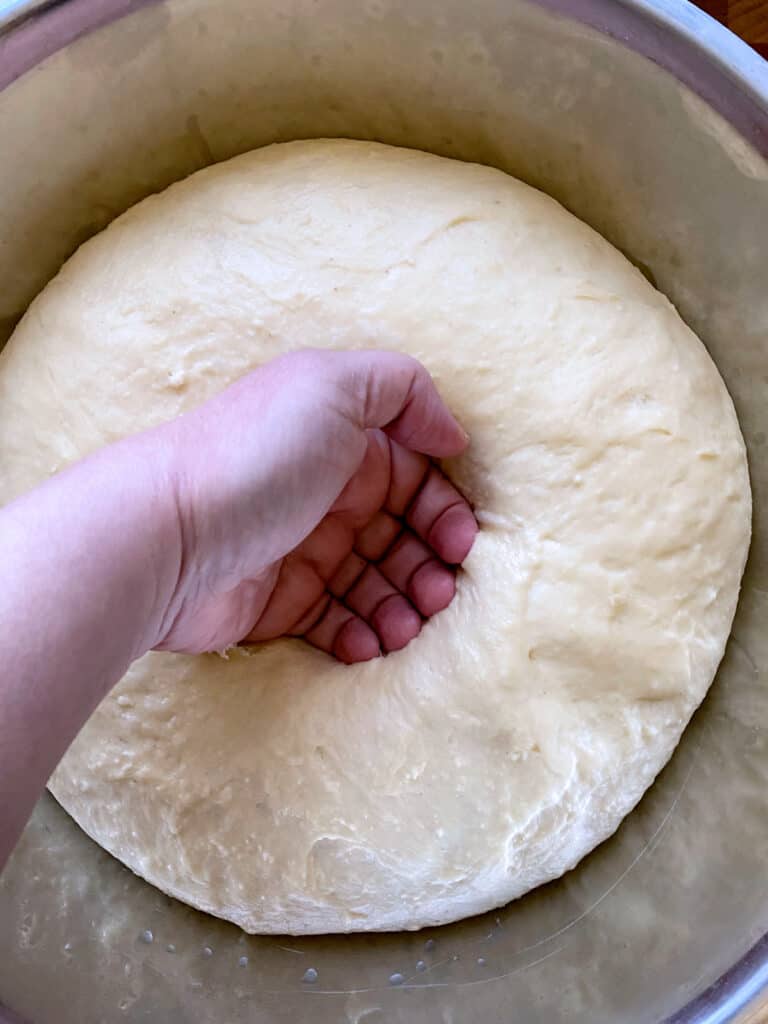
Move the dough to a large bowl, cover it with plastic wrap and a towel, and place it in a warm place to do the first proof. (I use my microwave oven over the stove; the light under it keeps the oven at a perfect temperature for proofing).
The dough is ready when doubled.
Punch it lightly and transfer it to your working space. Knead the dough for 2-3 more minutes.
Divide dough into three equal pieces. Cover the two with a towel and set them aside.
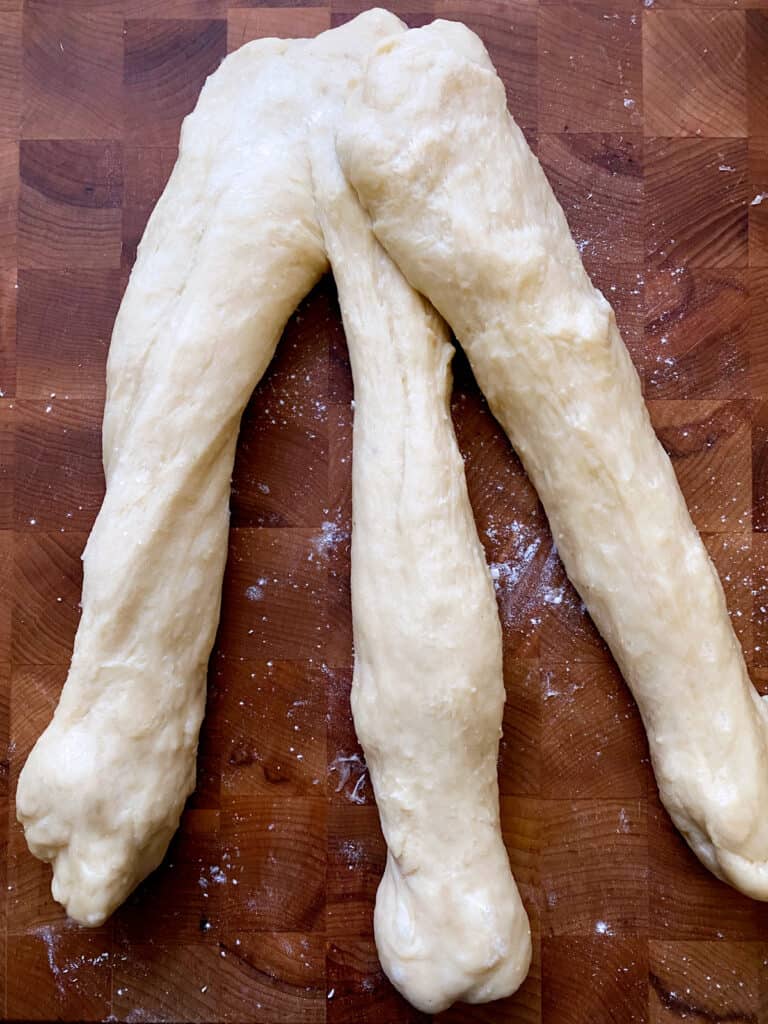

With your dough create three long pieces. Braid them into a loaf. Set on a parchment-covered baking sheet.

Repeat the same process with the other two pieces to create three loaves total.
Transfer to a warm place, cover with plastic and a towel, and let them prove for a second time. When the loaves have doubled in size, they are ready.

Beat an egg with a tablespoon of water. Brush the loaves with the egg wash and sprinkle almond slices on top.
Bake in 390°F / 200° C for 15-20 minutes tops.
Don’t overbake!
Detailed measurements and instructions can be found on the recipe card at the bottom of the page.

Tsoureki variations
- Tsoureki bread made for Greek Easter can be decorated with red eggs.
- For Christmas, tsoureki is sometimes decorated with whole walnuts, sesame seeds, and slivered almonds. The dough may include a combination of raisins, dried fruit, orange zest, cinnamon, cloves, cardamom, mastic resin, and mahlepi.
- For New Year’s Eve, it is baked in a round shape and has a coin hidden inside. We call it Vasilopita. On New Year’s Day, Vasilopita is cut in pieces, and the person who gets the secret coin is considered lucky for the whole year.

How to eat tsoureki
Enjoying a piece of tsoureki or smothered with butter and honey is always a treat. I love Nutella on a tsoureki slice!
Tsoureki is great dipped in coffee in the morning for breakfast. When I make French toast with tsoureki, it comes out so good and slightly lighter than regular French toast.

You may also like
Check out my Greek pantry staples
Cooked this? Rate this recipe! You can also leave a comment below. I love hearing from you!
WANT TO EAT LIKE A GREEK? Subscribe to my newsletter and follow me on Facebook, Pinterest, and Instagram for all of the latest updates.


Tsoureki Bread-The Greek Brioche
Equipment
- Rimmed baking sheets
- Parchment paper
- Mixer (hand mixer or tabletop) with a dough hook
Ingredients
- 1200 gr bread flour
- 80 gr fresh yeast or 3 envelopes of active dry yeast
- 70 gr cow's milk butter soft, room temperature
- 70 gr goat butter soft, room temperature
- 320 gr sugar
- 200 gr whole milk warm at 40°C or 104°F
- 6 eggs
- ⅔ teaspoon salt
- 2 teaspoons mahlep Check recipe notes for resources.
- 1 teaspoons mastic Check recipe notes for resources.
To make the for kneading
- ½ cup anise seeds Check recipe notes for resources.
for the egg wash
- 1 egg beaten with 1 tablespoon of water
topping
- ½ cup blanched almonds thinly sliced
Instructions
Make the anise seed tea
- Boil 2 cups of water. Add the anise seeds and let them steep for 10-15 minutes. Remove the seeds and let anise tea cool down.
Prepare the yeast
- Warm up the milk up to 40°C / 104° F.Add the yeast in the lukewarm milk and leave it for 10 minutes, stir it to dissolve, and leave it for another 5-6 minutes to expand and foam.Add 200 gr warm water to the yeast mixture and stir to combine.
Prepare the dough
- Mix the flour with the mahlep, mastic, sugar, and salt in a bowl. Put ⅓ of the flour mix in the mixer. Beat for half a minute to combine. Add the soft butter, eggs, and yeast mixture. Beat for 3-5 minutes while adding the flour little by little. The dough will be sticky.
- Remove dough from the mixer on a working surface. Using very little flour if you need to, knead, wetting your hands from time to time with the anise tea, until dough becomes soft and elastic and does not stick to your hands.
First rise
- Move dough to a large bowl, cover with plastic wrap and a towel, and place in a warm place to do the first rise*.
- The dough is ready when it is double the size. Punch it lightly to deflate and transfer it to your working space. Knead the dough for 2-3 more minutes.Divide dough into three equal pieces. Cover the two with a towel and set them aside.
- With your dough create three long pieces. Braid them into a loaf. Move loaf on a parchment-covered baking sheet.
- Repeat the same process with the other two pieces to create three loaves total.
Second rise
- Transfer to a warm place, cover with plastic and a towel and let them prove for a second time. When the loaves are doubled in size they are ready.
Bake
- Beat an egg with a tablespoon of water. Brush the loaves with the egg wash and sprinkle almond slices on top.Bake in a 390°F / 200° C for 15-20 minutes tops. Don't overbake!
Notes
Nutrition



